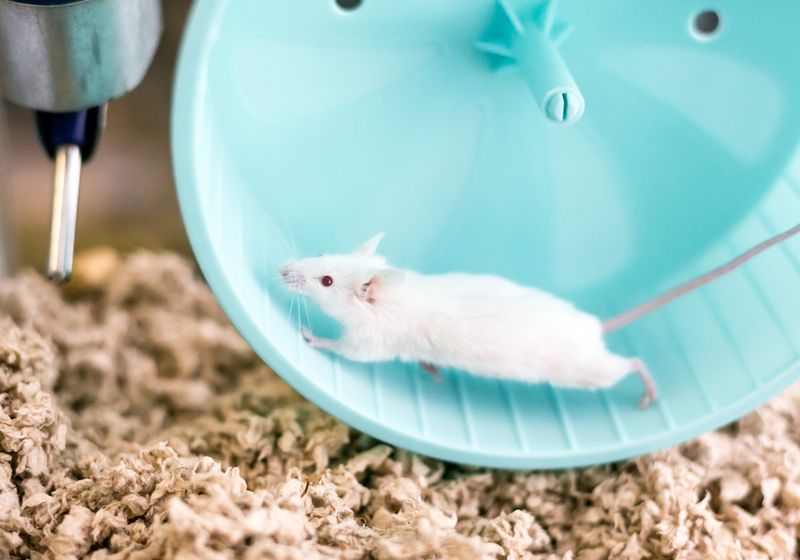Transferring the microbiome from inactive mice to other mice also transferred their behavior.
Animals and their microbiomes have evolved alongside one another for millions of years. But when nature selects for specific animal traits, it’s hard to tease apart the role of changing microbiomes from changes in host genetics.
Now, researchers at the Max Planck Institute for Biology Tübingen found that changing the mouse microbiome, and not the animal’s genetics, can lead to behavioral changes in just four generations.1 These findings show that traits can be passed not only through an animal’s genes, but through their microbiomes as well, which may help animals adapt quickly to new environments. The results, which were published in Nature Communications, have implications for how scientists study animal evolution.
To isolate the role of the gut microbiome on behavior, the researchers kept the host genome constant, while allowing the microbiome to change. “It’s a one-sided selection experiment,” said Ruth Ley, a microbial ecologist at the Max Planck Institute for Biology Tübingen and a coauthor of the study. “This had never been done in a mammal before.”
To do this experiment, the researchers needed three things: genetically identical mice that they bred for each generation, a trait to follow, and the microbiome from mice with a desired trait.
First, they looked at the variation in 16 physical and behavioral traits in a group of mice to select a trait that was variable enough so they could track changes over time. They landed on how far they moved. Transferring the microbiome from what Ley described in a Bluesky post as the “laziest mouse” into germ-free mice resulted in mice that moved less compared to control mice that received donor microbiomes at random. The researchers then took the microbiome from the least active mouse of this generation and transferred it into germ-free mice that were genetically identical to the ones used from the previous generation for another round of selection.
“One of the surprising things was how fast the effect happened,” said Ley. After four rounds of selection, the mice that received the “slow” microbiome had a decrease in locomotion activity by the end of the experiment.
Examining the gut microbiomes of these mice further, the researchers noted an enrichment of Lactobacillus bacteria and its metabolite, indolelactic acid. Giving other mice the bacteria or the metabolite resulted in their decreased locomotion. “Taking a characteristic and moving it to another animal just by transferring the microbiome…is really remarkable,” said Kevin Kohl, an ecologist at University of Pittsburgh who was not involved in the study.
On a translational level, Kohl thinks there are “really exciting potentials” to apply these findings to animal health and agriculture. Scientists have done similar one-sided selection experiments in plants, finding that soil microbiomes can pass on traits such as increased biomass or drought tolerance in plants.2,3
“If they’re really stably transmitted across generation, I think there’s a huge implication in say how animals adapt to climate change or rapid environmental change because you don’t have to wait for host genomic evolution,” said Taichi Suzuki, an evolutionary biologist at Arizona State University who was a coauthor on this study as a postdoctoral researcher in Ley’s group. This is because microbes can be acquired instantly from the environment and evolve faster than animal genomes. Previously Ley’s team found that microbes have been passed between generations within families where the gut microbiome’s evolutionary trajectory mirrors that of humans.4
If microbes, such as those that are passed between generations, could confer selectable traits, “then you basically have microbes acting as genes, which to me is pretty staggering,” said Ley.

